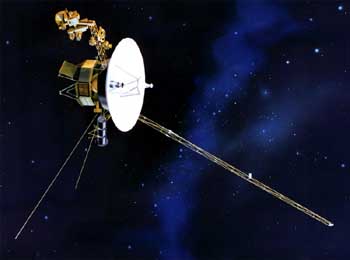Newton's First Law
for translational motion
Introduction The traditional phrasing of Newton's First Law of Motion is this: An object at rest will remain at rest (forever!), and an object in motion will remain in motion (forever!) in a straight line with constant speed, unless acted upon by an outside force.
Note that this statement is meaningless unless you know what a force is. What is a force? Any push or pull. Other synonyms: tug, nudge, poke, shove, prod, impetus, heave, yank
Alternate phrasing of Newton's 1st Law: An object cannot change its velocity by itself. Something outside must exert a force.
This property is called inertia. It is a natural resistance to acceleration that all objects have. The greater the object's mass, the greater this resistance.
You’ve probably heard of this before, and may even think that it is obvious, but it’s not. In our everyday experience, things don’t keep moving unless something pushes them. Coasting cars come to a stop; boxes slid on the floor come to a rest unless you keep pushing on them. The reason most things in our lives do NOT keep moving forever is because there almost always is an “outside force” — friction. When friction is reduced to insignificance, inertia becomes much more obvious. For example: a hockey puck sliding on an ice rink, or the puck on an air hockey table. The invention of the wheel, while not removing friction entirely, greatly reduces friction and makes it easier to keep things moving.
The idea of inertia wasn’t discovered by Newton, despite being called “Newton’s First Law”. It was actually discovered by Galileo.
You know about inertia from your everyday experience. For example:
- You are in a car that comes to a sudden stop. Your body wants to keep going at its original speed, and you feel like you are being pushed forward, into the seatbelt. Actually, the seatbelt is exerting a backwards force on you, slowing you down.
- You are trying to get ketchup out of a bottle. What do you do? You shake the bottle, bringing the upside-down bottle towards the plate and stopping it suddenly, hoping the inertia of the ketchup will cause it to keep going and come out of the bottle. (If the ketchup is thick or the bottle opening narrow, it might not work.)
- You are rolling a cart with an object on top of it. If you push on the cart to start or stop it, the object on top may fall off. (I did this once with a very expensive computer monitor on a cart. CRASH!)
- You are in a vehicle moving with constant velocity, and toss a ball straight up. To you, it appears to rise straight up, stop, and fall straight down back into your hand, just as it would if you and the car were stationary. To an observer standing by the road, however, the ball lands in your hand because, when it was in the air, its inertia carried it forward at the same speed it had when you were holding it.
Here are some consequences of inertia that I hope you never experience...
- Imagine you are in a stopped car (say, at a red light) and another car strikes yours from behind, you may suffer whiplash. Your body is accelerated forward by the force of the seat, but your head wants to stay stationary. If there is no headrest, your head will be accelerated forward by your very overstetched and bent neck. To you, it feels as if your head is snapped backwards, but what’s really happening is your body is being accelerated forward and your head is being left behind. Watch this video from CNN about testing conducted by the Insurance Institute for Highway Safety.
- Imagine you are in a car and crash into a tree. The car comes to a sudden stop because the tree is exerting a very large force on the car. The tree isn’t exerting a force on your body, however, and you will continue moving at your original velocity until something does stop you. If you have your seatbelt on, the seatbelt will do the job. If not, you will continue through the windshield and be stopped by some object outside the car.
- While riding a skateboard without a helmet, you fall and your head strikes the ground. Your skull stops suddenly, but your brain keeps moving, causing it to ram into the inside of your skull, resulting in bruising, swelling, and disruption of brain function. This is called a concussion.
A common theme from the above examples is that inertia often feels like
a force, in the opposite direction to the actual force. It is not a force,
though; we’ll discuss the distinction in more detail after we talk about
Newton’s Second Law.
Here are some other examples of inertia.
| The Voyager 1 and 2 space probes were launched in 1977, to visit the gas-giant planets Jupiter and Saturn. Voyager 2 also went to Uranus and Neptune. They are now both about 100 times further from the Sun than Earth is, more than 3 times the Sun-Neptune distance. Since their launch in 1977, the Voyagers have been coasting — moving purely due to their inertia. http://voyager.jpl.nasa.gov/ |  |
| Organs inside the ears of many fish, including sharks, contain otoliths, small grains of calcium carbonate that help the fish sense its own acceleration. When the fish changes speed or direction, the grains shift relative to the organ (called the sacculus). Really, the otolith's inertia is carrying it with constant speed and direction; it's the rest of the shark changing velocity that causes the sides of the sacculus to hit the otolith and provide acceleration infomation to the fish's brain. | |
| The U.S. Navy uses hovercraft that float above the surface of the water, which minimizes friction and allows them to travel quickly. These craft are called LCAC's (for Landing Craft - Air Cushion) and are used for amphibious landings on beaches. They can travel fast and, instead of having to stop at the beach to unload, just keep riding up the beach and inland. Hovercraft are tricky to drive, though, because of inertia. Once going, they are hard to stop. A car uses friction with the ground to speed up, change direction, or slow down. A hovercraft is not touching the ground, so there's no traction (another word for friction) to do those things. |
Here's a YouTube video. |
Activities & Practice
to do as you read
1. Think of another good example of inertia from your own experience.
2. Physics Trick: Bend your arm so your hand is next to your ear, with the palm facing up and elbow pointing forward. With your other hand, place a penny on your elbow. Now, swiftly bring your hand down, catching the penny. Repeat with a stack of pennies for added impressiveness. What role does inertia play in this trick?
3. Here is a puzzle, in video form. Write a few sentences answering the final question.
Philosophical Interlude We don’t know why objects have inertia. They just do. Naming an observed phenomenon doesn’t explain it, but it does allow us to talk about it, and to use this phenomenon to explain specific instances, such as whiplash.
Measurement of Inertia You have no doubt heard of mass before. Sometimes it is described as the "amount of matter" that makes up an object. It is also a measurement of the amount of inertia the object has. In other words, you can think of "mass" and "inertia" as synonyms.
In SI mass is measured in the units grams and kilograms. There is an English unit of mass, but you've probably never heard of it. It's called the slug.
Additional Activities & Practice
4. If you have a helium balloon floating freely inside a car, what happens to it when the car speeds up? What about when you slow down? Think carefully about this scenario, and write down your predictions and your reasons. Then watch this video. If you were initially incorrect, rethink and explain why your original reasoning was faulty.
5. Read this article from Snopes.com.
